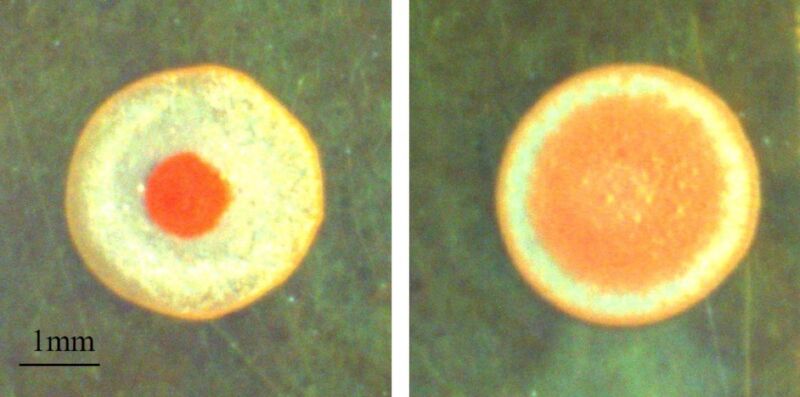Paint drops form “fried egg” patterns if concentration, temp is just right

Enlarge / As paint drops dry, they can look like a fried egg" (left) or develop a more even pigment distribution (right). (credit: S.M.M. Ramos et al., Langmuir 2023/ACS)
French scientists have been watching paint drops dry and monitoring the resulting patterns in hopes of finding ways to better control the drying process to reduce cracks and other imperfections. They found that some drops dried uniformly, while others wound up resembling fried eggs with pigmented "yolks" at the center surrounded by white, depending on pigment concentration and temperature, according to a recent paper published in the journal Langmuir.
The underlying mechanism is akin to the so-called "coffee ring effect," when a single liquid evaporates and the solids that had been dissolved in the liquid (like coffee grounds) form a telltale ring. It happens because the evaporation occurs faster at the edge than at the center. Any remaining liquid flows outward to the edge to fill in the gaps, dragging those solids with it. Mixing in solvents (water or alcohol) reduces the effect, as long as the drops are very small. Large drops produce more uniform stains.
"Whiskey webs" are another related example. As previously reported, Princeton University physicist Howard Stone hastracked the fluid motion in whiskey drops with fluorescent markers, concluding that surfactant molecules collect at the edge of the drop. This creates a tension gradient pulling the liquid inward (known as the Marangoni effect, which is also associated with "tears of wine"). There are also plant-based polymers that stick to the glass and channel particles in the whiskey.